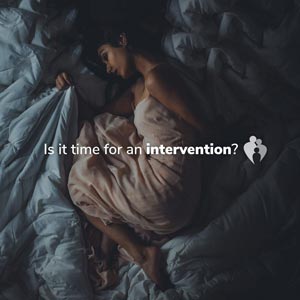Treatment plans for a serious drug or alcohol addiction program are a long-term endeavor. Patients and families seeking treatment often only consider the necessity of a 30 or 90-day program. The truth is, maintenance of sobriety and transition to a healthy lifestyle is a long-term process. Once the initial detox and rehabilitation treatment is over, aftercare programs and monitoring are necessary to ensure success. If you or a loved one is looking for an addiction treatment program, be sure to plan for long-term care and maintenance to reduce the chance of relapse.
Types Of Long-Term Treatment Programs
There are no one-size-fits-all methods for successful long-term treatment. As with the initial rehabilitation process, personalized care is necessary for success. Long-term care begins upon completion of an initial inpatient or outpatient rehabilitation treatment. This can be 30, 60, or 90 days after treatment begins. There are a variety of long-term treatment programs available to patients. Sober living programs, one-on-one or group counseling, holistic programs, and group support systems. Each type has its own merits and should be a consideration for patients and families. It’s important to note that effective treatment is dependent on individual needs. If at any point in the process the patient feels the plan is ineffective or counterproductive, those monitoring the program can make changes.
The Benefits Of Sober Living Programs
Sober living facilities successfully treat patients after release from initial rehabilitation programs and are a wonderful method of treatment for some patients. Also known as transitional living facilities, these programs provide a haven for recovery. Rules for living vary by facility, but sometimes allow for patients to continue jobs and outside pursuits. In the past, sober living facilities received a bad reputation from a few poorly managed programs. Don’t let a few bad apples deter you from seeking treatment; sober living facilities are proving to be successful in long-term treatment. There are numerous benefits to seeking treatment in these types of facilities.
Gradual Reintroduction To Life
The first 30 to 90 days after initial rehabilitation treatment are the most important for preventing relapse. Patients are especially vulnerable during this period and have a 50% chance of relapse. One of the best ways to prevent this is with a gradual reintroduction to life. Sober living facilities help patients to ease back into their sober lives one step at a time. This step prevents patients from immersing themselves in their previous lives. Initial rehabilitation treatments focus on developing new habits and life skills, but these are often difficult to maintain when reintroduced to previous lives. The transition back to reality is slowed and monitored with the help of sober living facilities.
Transitional living facilities have set rules and regulations to create structure. Depending on the facility, patients may have restrictions for leaving. Patients may need to sign out of the facility and have curfews. Residents take part in group, individual, or 12-step programs to assist recovery efforts. Facilities may have set schedules for meetings or meals, requiring patients to be present. The structure designs a program where patients must meet requirements and relearn life management skills. Environments with heavy structure can also help patients to feel more secure and in control.
Guidance And Support
Sober living facility residents are all battling addictions and working toward recovery. Each patient is struggling through similar situations, which creates a supportive atmosphere. Patients develop a sense of camaraderie and help others through their struggles. Additionally, sober living facilities include home managers. These individuals are often individuals who have recovered themselves and enjoy working to help others. The managers are available for guidance and support, helping with everyday struggles. The environment of the sober living facilities is preferable to sending a patient home, where family members may misunderstand the patient’s needs and struggles.
Dual-Diagnosis Support
Those patients with a dual-diagnosis of addiction and mental illness benefit greatly from transitional facilities. As these patients leave the initial rehabilitation programs, they are adjusting to new psychological prescription medicines. Living in a sober facility, the patients are in a supportive, monitored environment. This time allows for medication adjustment and extra opportunities for counseling. Relearning life skills is also an important step for those with a dual-diagnosis.
Accountability
Residents in transitional living addiction recovery are held accountable for behaviors and lapses in sobriety. Many facilities implement weekly drug and alcohol testing programs. If patients fail the tests, some facilities provide second chances to stay in the home. Repeatedly failing the tests will result in removal from the home.
Recovery Monitoring And Aftercare Program
Once the initial rehabilitation treatment program is complete, a strong aftercare program is necessary. Failure to establish a strong aftercare and monitoring program can result in lowered success rates. If you or a loved one is seeking treatment for a drug or alcohol problem, be sure the program is long-term.
During the long-term recovery process, frequent monitoring is critical. If patients or families feel a method of treatment is ineffective, changes will have to be made. Leaving patients in ineffective programs or therapies can be detrimental to recovery and result in relapse. To avoid this, find a professional to consistently monitor patient progress. A professional interventionist can help determine when treatments are not effective, amending the program to meet patient needs.
Professional Interventionists
The best substance abuse strategies involve professional interventionists. A professional interventionist will become your family’s case manager for everything regarding treatment. From detox to long-term maintenance, your interventionist will work to ensure the types of treatment you are receiving are effectively moving you toward your goals. He or she will work to guide the process toward the best outcome possible: long-term sobriety. Family will also have an involvement in decision making, and the interventionist will work to maintain the needs of the family environment. If you or a loved one is looking for a drug or alcohol rehab plan, call us for an assessment and intervention guidance. Intervention is the first step in recovery. We are here for you and your family.









 All Rights Reserved |
All Rights Reserved |